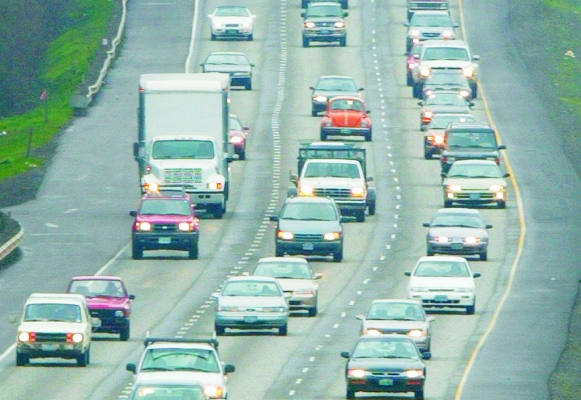Report explores the end of the freeway era

Decades after the completion of most interstate freeways, many transportation authorities have turned their attention to expanding existing freeways. A new OTREC research report examines the consequences for American urban areas if all freeway expansion stopped.
Titled “No More Freeways,” the report concludes that investing in arterial streets instead of expanding freeways provides the greatest social benefit for the cost. Doing so distributes roadway capacity throughout the area instead of concentrating it on freeway corridors.
The “no-more-freeway” policy helps distribute jobs and housing throughout the urban area and makes it easier to get around, principal investigator Lei Zhang found. Zhang modeled various transportation alternatives for both a hypothetical urban area and a real-world system: Minneapolis-St. Paul.
Compared with various public, private and mixed-ownership scenarios for freeway expansion, arterial street investments perform better over the first eight years. By year 10, the model shows, public-private and public freeway investments provide a greater net social benefit, assuming a 3-percent-per-year increase in travel demand.
Factors not considered in the model, namely transit and land use, would make the “no-more-freeways” option a better choice for a longer period, Zhang posits. Changes in land use from this option could cause people to move closer to workplaces. Transit investments could get people around more efficiently than freeway expansion.
The report also compares the two better-performing freeway expansion alternatives: a public-private choice and a public one. The public-private option allows the private sector to expand freeways and charge tolls, while the public option keeps expansion within the public sector.
Both options provide social benefits to the freeway users and investors. In the public-private option, investors enjoy most of the benefits: an average 18.2 percent annual return. Tolls on private roads over a 15-year period average 17 cents per kilometer, about seven times as much as distance-based tolls on public roads.
While private roads provide a greater total social benefit, the road users enjoy only 16.4 percent of this benefit. Private investors’ profit constitutes the majority of social benefit from this option.
This research shows the need for better understanding of how land use and transportation-mode choice, particularly including transit, would affect the performance of various investment scenarios. Without any changes, and assuming a 3-percent annual increase in travel demand, building more freeways would eventually become more cost-effective.
The full report title is “No More Freeways: Urban Land Use Transportation Dynamics Without Freeway Capacity Expansion.” Read more or download the full report.
